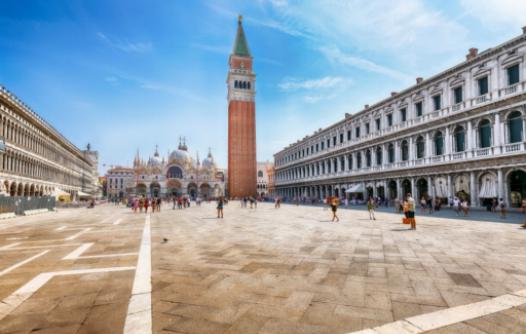Venice's Carnival has long been celebrated for its stunning masks and elaborate costumes. Over the centuries, these iconic elements have evolved and transformed, reflecting the changing trends and influences of the times. From the opulent gowns of the Renaissance to the modern interpretations seen on the streets of Venice today, the Carnival attire has remained a pillar of the city's rich cultural heritage. Join us on a journey through the evolution of Venetian Carnival fashion and discover the enduring allure of this historical tradition.

Influence of Venetian Masks on Carnival Fashion
Venetian masks have had a significant influence on carnival fashion throughout the ages. These intricate and ornate masks have long been a staple of Venetian Carnival attire, adding an air of mystery and intrigue to the festivities. Masks were originally worn during the Venetian Carnival as a way for individuals to conceal their identity and social status, allowing them to mingle freely with others without fear of judgment or reprisal. Over time, these masks became an integral part of Venetian Carnival fashion, inspiring a wide range of styles and designs that continue to be popular today. From simple half-face masks to elaborate full-face masks adorned with feathers, jewels, and intricate patterns, Venetian masks have evolved to become a symbol of the Carnival season. Their influence can be seen in the elaborate costumes and accessories worn by attendees, who often strive to create a cohesive and visually striking ensemble that complements their chosen mask. The allure of Venetian masks lies in their ability to transform the wearer, allowing them to embody a different persona and unleash their creativity and imagination. As such, masks continue to play a central role in shaping the fashion landscape of the Venetian Carnival, inspiring new trends and styles that pay homage to this rich and vibrant tradition.
The Rise of Elaborate Venetian Carnival Gowns
These gowns were characterized by intricate detailing, luxurious fabrics, and vibrant colors that reflected the opulence and wealth of the Venetian elite.
The gowns worn during this period were often embellished with embroidery, lace, ribbons, and jewels, creating a lavish and extravagant appearance. Women would also wear elaborate headpieces and accessories to complement their gowns, further adding to the overall grandeur of their outfits.
The rise of elaborate Venetian Carnival gowns not only showcased the wealth and status of the wearers but also served as a form of artistic expression and creativity. The gowns were a way for individuals to showcase their personal style and individuality, as well as participate in the festive and celebratory atmosphere of the Carnival season.
The elaborate gowns of Venetian Carnival played a significant role in shaping the fashion trends of the time, influencing designers and fashionistas throughout Europe. The intricate detailing and luxurious fabrics of Venetian Carnival gowns continue to inspire modern fashion designers, showcasing the enduring impact of Venetian Carnival attire on the world of fashion.
Revival of Traditional Venetian Carnival Attire
The revival of traditional Venetian Carnival attire has been a key aspect of keeping the rich history and cultural significance of the event alive. In recent years, there has been a growing interest in returning to the roots of Venetian fashion and celebrating the unique styles that have been passed down through generations. Designers and artisans are increasingly looking to historical references and traditional techniques to create authentic and beautiful carnival costumes.
One of the main features of traditional Venetian Carnival attire is the use of luxurious fabrics such as silk, velvet, and brocade. These materials have long been associated with the opulence and elegance of Venetian society, and their use in carnival costumes helps to evoke the grandeur of the past. Intricate embroidery, beading, and lacework are also common elements of traditional Venetian attire, adding an extra layer of detail and craftsmanship to each costume.
Another important aspect of traditional Venetian Carnival attire is the incorporation of historical styles and silhouettes. Dresses are often inspired by the fashions of the Renaissance period, with full skirts, puffed sleeves, and corseted bodices being popular choices. Masks, another key component of Venetian fashion, are often paired with these elaborate gowns to create a sense of mystery and intrigue.
Overall, the revival of traditional Venetian Carnival attire is a testament to the enduring appeal of this iconic event. By honoring the styles of the past and paying homage to the artisans who created them, designers and revelers alike can keep the spirit of Venetian Carnival alive for generations to come.
Modern Interpretations of Venetian Carnival Dress
Designers and fashion enthusiasts alike have taken inspiration from the rich history and tradition of the Venetian carnival, incorporating elements of the past while adding their own unique twist.
One of the main ways in which modern interpretations differ from traditional Venetian carnival attire is in the use of different materials and fabrics. While traditional costumes were often made of rich brocades and velvets, modern interpretations may incorporate more contemporary textiles such as lace, sequins, and feathers.
Additionally, modern interpretations of Venetian carnival dress often feature a more streamlined silhouette, with designers opting for sleeker, more figure-hugging designs. This departure from the more voluminous and elaborate gowns of the past allows for a more modern and wearable interpretation of Venetian carnival attire.
Another key aspect of modern interpretations of Venetian carnival dress is the incorporation of contemporary trends and styles. Designers may take inspiration from current fashion trends, such as metallics, bold prints, and asymmetrical hemlines, and incorporate them into their designs while still paying homage to the traditional elements of Venetian carnival fashion.
Overall, modern interpretations of Venetian carnival dress offer a fresh and exciting take on a centuries-old tradition. By merging the past with the present, designers are able to create stunning and innovative designs that capture the spirit of the Venetian carnival while appealing to a modern audience.
